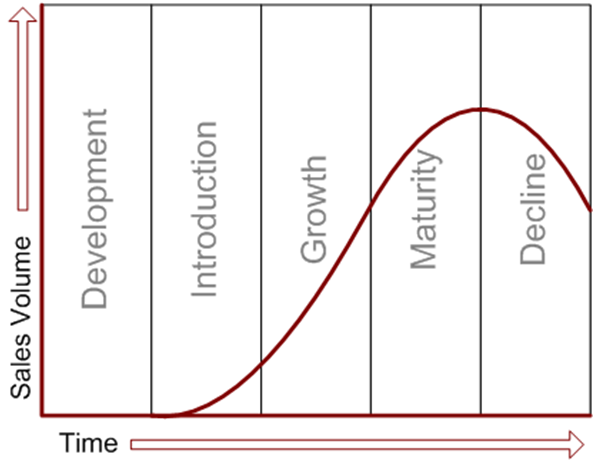Posts by John Dudovskiy

Goal setting, as an effective time management principle has been mentioned by Harris (2008), Boone and Kurtz (2010), and others. The importance of time management plan has been stressed by Harris (2008). Specifically, the author states that “when the management is not capable of drawing the correct time management plan, it may result to potential work related issues” (Harris, 2008, p.12). Pearson and Thomas (2010) consider goal setting as a compulsory condition of effective time management and praise the motivational aspects of this principle. According to Boone and Kurtz (2010) goals, aims and objective to be set by individuals has to meet the SMART principle, where the abbreviation stands for specific, measurable, achievable, relevant and time-bound. References Boone, LE & Kurtz, DL (2010) “Contemporary Business” John Wiley & Sons Harris, J. (2008) “Time Management 100 Success Secrets: The 100 Most Asked Questions on Skills, Tips, Training, Tools and Techniques for Effective Time Management” Lulu Publications Pearson, B. & Thomas, N. (2010) “The Shorter MBA: A Practical Approach to the Key Business Skills” Bell & Bain

The Model of Goal Directed Behaviour has been developed on the basis of the Theory of Planned Behaviour. This model “views the fundamental components of the theory of planned behaviour with respect to goals rather than behaviours” (Hagger and Chatzisarantis, 2009, p.36). Desire plays an integral role in The Model of Goal Directed Behaviour in a way that it is perceived to be stronger predictor compared to attitudes and subjective norms (Sutton, 1998). Explaining application of the model in practical levels Erasmus et al. (2001) explain that markets need to study primary desires of their target customer segment so that product and services can be developed to satisfy this desire or give the perception of satisfaction of the desire. References Erasmus, A. C., Boshoff, E. and Rousseau, G.G.(2001). “Consumer decision-making models within the discipline of consumer science: a critical approach”, Journal of Family Ecology and Consumer Sciences. 2001(29) Hagger, M. & Chatzisarantis, N. (2007) “Social Psychology of Exercise and Sport” McGraw-Hill International Sutton, S. (1998) “Predicting and explaining intentions and behaviour: how well we are doing? Journal of Applied Social Psychology, 28, pp. 1317-1318
By John Dudovskiy
Category: Consumer Behaviour

The Theory of Trying promoted by Bagozzi and Warsaw (1990) focuses on the assessment of trying to act. In other words, in theory of trying “an attitude toward a reasoned action is replaced by an attitude toward trying and an intention is restricted to an intention to try” (Carsrud et al., 2009, p.155). In theory of trying Bagozzi and Warsaw (1990) divide goals into two categories: intermediate and end-state goals. In relation to this theory Gould et al. (1997) have identified two main reasons of why consumers may fail to try to consume. Firstly, consumers may fail to consider the options available to them. Secondly, consumers may consciously refrain from buying for various reasons. References Bagozzi, R. & Warsaw, L. (1990) “Trying to Consumer” Journal of Consumer Research 17, (2) pp. 127 – 140. Carsrud, A., Brannback, M., Elfving, J. & Brandt, K. (2009) “Motivations: The Entrepreneurial Mind and Behaviour” in Understanding the Entrepreneurial Mind: Opening the Black Box, editors Carsrud, A. & Brannback, M.
By John Dudovskiy
Category: Consumer Behaviour

The cognitive approach to consumer behaviour perceives individuals as ‘information processors’ (Ribeaux and Poppleton, 1978) acknowledging the impact of environment and social experience in the processing of information. The development of cognitive psychology in general is credited with the introduction of Stimulus-Organism-Response model by Hebb in 1950s. According to Stimulus-Organism-Response model there is a linear relationship between the impact of stimuli on inactive organism, and as a result of the impact the organism responses in a certain manner (Cziko, 2000). However, this model has been subjected to criticism, notably by Tyagi (2004) and Kahle and Close (2006), and the criticism relates to the idea that Stimulus-Organism-Response model does not take into account the past experiences of the organism. References Cziko, G. (2000) “The Things We Do: Using the Lessons of Bernard and Darwin to Understand the What, How, and Why of Our Behaviour” Massachusets, MIT Press Kahle L.R. and Close, A. (2006) “Consumer Behaviour Knowledge for Effective Sports and Event Marketing”, Taylor & Francis, New York, USA
By John Dudovskiy
Category: Consumer Behaviour

According to behaviourist approach to human behaviour is depended to external events, and importantly, a specific pattern of behaviour can be learned because of external factors (Wiedmann et al., 2007). Advocates of behaviourist approach refer to famous behavioural experiments involving dogs and the impact of external environment on their behaviour conducted by Pavlov (1849-1936) to justify the validity of the approach. However, Schiffman et al. (2007) argue that while to behaviourist approach to human behaviour has adequate level of relevance to modern marketplace it is not able to explain the issues of consumer behaviour thoroughly on its own. References Schiffman, L., Hansen H. and Kanuk L. (2007) “Consumer Behaviour: A European Outlook”, London: Pearson Education Wiedmann, K., Hennigs, N. and Siebels, A. (2007) “Measuring Luxury consumer perception: A cross-culture framework”, Academy of Marketing Science review, 2007(7)
By John Dudovskiy
Category: Consumer Behaviour

The economic man approach to consumer behaviour perceives consumers to be highly rational and adequate engaging in economic transactions in a beneficial manner for self-interest (Tyagi, 2004). According to this principle consumer rational behaviour includes being aware of all alternative options, as well as, having knowledge of advantages and disadvantages associated with each option (Kahle and Close, 2006). Blackwell et al. (2006) adopt a sceptical approach to the level of applicability of economic man theory in today’s marketplace in practical levels arguing that nowadays consumers are more tempted to make ‘irrational’ purchase decisions due to the highly sophisticating levels of marketing strategies. References Blackwell, R., Miniard, P. and Engel, J. (2006) “Consumer behavior”, Mason: Thompson Kahle L.R. and Close, A. (2006) “Consumer Behaviour Knowledge for Effective Sports and Event Marketing”, Taylor & Francis, New York, USA Tyagi, C. and Kumar, A. (2004) “Consumer Behaviour”, Atlantic Publishers, US
By John Dudovskiy
Category: Consumer Behaviour

Objective analysis of the past equips us with necessary knowledge and perspective to deal with the present and future. In other words, the importance of economic history and studying global factors and events that have formed the current economic situation has practical implications in terms of dealing with global economic issues and challenges (Coughlan and Coughlan, 2011). Changes in the world economy taking place since 1945 have resulted in international market expansion for many businesses erasing borders between countries to a certain extent, and providing vast opportunities for businesses. However, this process was not unilinear, i.e. economic changes taking place after 1945 did not have the same impact for all countries and businesses. The nature of economic changes taking place in each geographical location after the Second World War, as well as, the impact of these changes on the performance of private entities depend on a wide range of factors such as political and economic system within the country, the level of economic development and infrastructure etc. Global economic reality by the end of World War II, as aftermath of the Great Depression of 1930’s is referred to as a ‘Golden Age of Capitalism’ and this period lasted until till the beginning of 1970’s (Weber, 2007). Specific factors contributing to the significant rise of consumerism especially in USA in this period include the ‘baby boom’, rapid developments of automobile and aviation industries, and others. The period of the ‘Golden Age of Capitalism’ from 1945 until 1986 is also marked with US dollar becoming the world’s major reserve currency and “between 1945 and the mid-1960s the United States may have accounted for 85 per cent of all new FDI flows” (Jones, 2005, online). Leading positions in many industries were assumed by US corporations in a global scale putting a foundation for…

SWOT stands for strengths, weaknesses, opportunities, and threats associated with a business and it is an effective strategic analytical tool used to assess businesses. The following table illustrates GlaxoSmithKline SWOT Analysis : Strengths Increased level of R&D potential Strong financial position Global coverage with presence in more than 100 countries Weaknesses Considerable damage made to brand image because of Avandia drug scandal Ineffective online presence Low level of flexibility due to the large size of the company Opportunities Increasing the level of presence in China and India Following diversification strategy Improving the level of online presence Threats Lawsuits to damage the brand image New competitors joining the market Worsening of economic situation in Europe

GlaxoSmithKline PESTEL Analysis. The level of implementation of GlaxoSmithKline (GSK) marketing strategy is subject to a range of external and internal factors that shape overall marketing environment for the business. PESTEL strategic analytical tool can be used to study the impacts of external factors to the business where the abbreviation stands for political, economical, social, technological, ecological, and legal factors. Political factors affecting the implementation of GSK marketing strategy include possible changes in international trade regulation and competitive regulation likely to be introduced by the governments of China and India. Economic factors impacting GSK marketing strategy include high rate of economic growth in China and India. Moreover, current economic uncertainties associated with European markets might have negative implications on the marketing strategy Social factors with potential implications on GSK marketing strategy are changes in consumer lifestyles, shifts in consumer attitudes and opinions etc. However, Cameron (2012) specifies increasing level of customer resentment towards large amounts of profits made by pharmaceutical companies and sliding images of large pharmaceutical companies as the most significant social factor in the current environment. Technological factors include breakthroughs in pharmaceutical industry, issues associated with licensing and patenting drug manufacturing technology, as well as, the level of development of industry technology. Ecological factors also have specific implications on GSK marketing strategy that include problems related to global warming, and impact to the environment of GSK activities, and the reaction of stakeholders to this impact. Legal factors as one of the most important factors involve rules and regulations directly and indirectly related to GSK operations in local markets, as well as, European law and international trade rules, regulations and agreements.

Product Life Cycle model divides the life cycle of products into five stages: development, introduction, growth, maturity, and decline. Each type of the product goes through all of these stages; however, the duration of each stage depends on a wide range of factors such as the nature of the product, its price, the level of competition in the industry, overall economic climate etc. Product Life Cycle model represents a valuable framework to be used in strategic marketing planning. Namely, with the application of the model marketing managers are able to forecast the life cycle of their products, and introduce necessary reflections within relevant marketing strategy.
